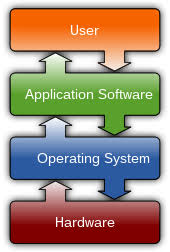The Benefits of RFID Inventory Management System
In today’s fast-paced business environment, efficient inventory management is crucial for the success of any organization. One technology that has revolutionized inventory tracking and control is Radio Frequency Identification (RFID). RFID enables businesses to automate and streamline their inventory processes, leading to improved accuracy, efficiency, and cost savings.
How RFID Works
RFID uses radio waves to transmit data from RFID tags attached to inventory items to an RFID reader. Each tag contains a unique identifier that can be read wirelessly, allowing for quick and accurate identification of items. This real-time tracking capability provides businesses with instant visibility into their inventory levels and locations.
The Benefits of RFID Inventory Management System
- Improved Accuracy: RFID eliminates manual data entry errors and ensures accurate inventory counts.
- Increased Efficiency: Automated tracking and real-time updates enable faster inventory management processes.
- Cost Savings: By reducing stockouts, overstocking, and shrinkage, RFID helps businesses optimize their inventory levels and reduce carrying costs.
- Better Visibility: Businesses gain better visibility into their supply chain operations, enabling them to make informed decisions and respond quickly to changing market demands.
- Enhanced Security: RFID enables businesses to track the movement of items throughout their supply chain, reducing the risk of theft or loss.
Implementing an RFID Inventory Management System
To implement an RFID inventory management system successfully, businesses need to invest in RFID tags, readers, and software that integrate with their existing systems. Training employees on how to use the technology effectively is also essential for maximizing the benefits of an RFID system.
In conclusion, adopting an RFID inventory management system can transform how businesses manage their inventory operations. By leveraging the power of RFID technology, organizations can improve accuracy, efficiency, and visibility throughout their supply chain, ultimately driving greater operational efficiency and profitability.
Top 5 Benefits of Implementing an RFID Inventory Management System
- Improved accuracy in inventory tracking
- Increased efficiency in managing inventory processes
- Cost savings through optimized inventory levels
- Enhanced visibility into supply chain operations
- Better security by reducing the risk of theft or loss
Challenges of RFID Inventory Management: High Costs, Interference Issues, and Integration Complexity
Improved accuracy in inventory tracking
RFID inventory management systems offer a significant advantage in terms of improved accuracy in inventory tracking. By eliminating manual data entry errors and providing real-time visibility into inventory levels, RFID technology ensures that businesses have an accurate and up-to-date understanding of their stock. This enhanced accuracy not only reduces the likelihood of errors and discrepancies but also enables businesses to make informed decisions based on reliable data, ultimately leading to more efficient operations and better customer service.
Increased efficiency in managing inventory processes
The implementation of an RFID inventory management system brings about a significant enhancement in managing inventory processes by increasing efficiency. Through automated tracking and real-time updates facilitated by RFID technology, businesses can streamline their inventory management operations, leading to quicker and more accurate handling of inventory tasks. This efficiency boost not only saves time but also allows for improved decision-making based on up-to-date inventory data, ultimately contributing to smoother and more effective overall business operations.
Cost savings through optimized inventory levels
RFID inventory management systems offer significant cost savings through optimized inventory levels. By providing real-time visibility into stock levels and locations, businesses can accurately track their inventory and avoid overstocking or stockouts. This optimization leads to reduced carrying costs, minimized waste, and improved inventory turnover rates. With RFID technology, companies can streamline their supply chain operations, make informed decisions based on accurate data, and ultimately achieve cost savings by maintaining the right amount of inventory at all times.
Enhanced visibility into supply chain operations
RFID inventory management systems offer businesses the valuable pro of enhanced visibility into their supply chain operations. By utilizing RFID technology to track inventory items in real-time, businesses can gain comprehensive insights into the movement and location of their products throughout the supply chain. This heightened visibility enables companies to make informed decisions, optimize logistics processes, identify bottlenecks, and respond promptly to changes in demand or disruptions. Ultimately, enhanced supply chain visibility provided by RFID systems empowers businesses to operate more efficiently, reduce costs, and deliver superior customer service.
Better security by reducing the risk of theft or loss
RFID inventory management systems offer better security by significantly reducing the risk of theft or loss within a business’s supply chain. By enabling businesses to track the movement of items in real-time using RFID tags and readers, organizations can enhance their security measures and minimize the chances of unauthorized access or pilferage. This heightened visibility and control over inventory not only deter potential theft but also help in swiftly identifying and addressing any discrepancies, ultimately safeguarding valuable assets and maintaining the integrity of the supply chain.
Initial Implementation Cost
One notable drawback of implementing an RFID inventory management system is the initial implementation cost involved. Businesses considering adopting RFID technology may face substantial upfront expenses for acquiring RFID tags, readers, and compatible software. These costs can pose a barrier to entry for some organizations, especially smaller businesses with limited budgets. Despite the long-term benefits of improved efficiency and accuracy that RFID systems offer, the initial investment required may deter some businesses from embracing this advanced inventory management solution.
Potential Interference
Potential Interference is a significant con of RFID inventory management systems. Radio frequency interference from other devices or materials can interfere with RFID signals, leading to inaccuracies in inventory tracking. This interference can result in missed reads or misreads of RFID tags, impacting the overall reliability and effectiveness of the system. Businesses relying on RFID technology for inventory management must be aware of this potential issue and take measures to mitigate interference to ensure the system operates smoothly and accurately.
Complexity of Integration
The complexity of integration poses a significant challenge for businesses looking to implement RFID inventory management systems. Integrating RFID technology with existing inventory systems and processes can be a time-consuming and resource-intensive task. Ensuring seamless operation between the new RFID system and current infrastructure may require careful planning, testing, and potentially modifications to existing processes. This complexity adds a layer of difficulty to the implementation process, requiring businesses to allocate sufficient time and resources to overcome integration hurdles effectively.




